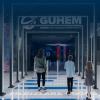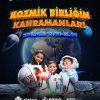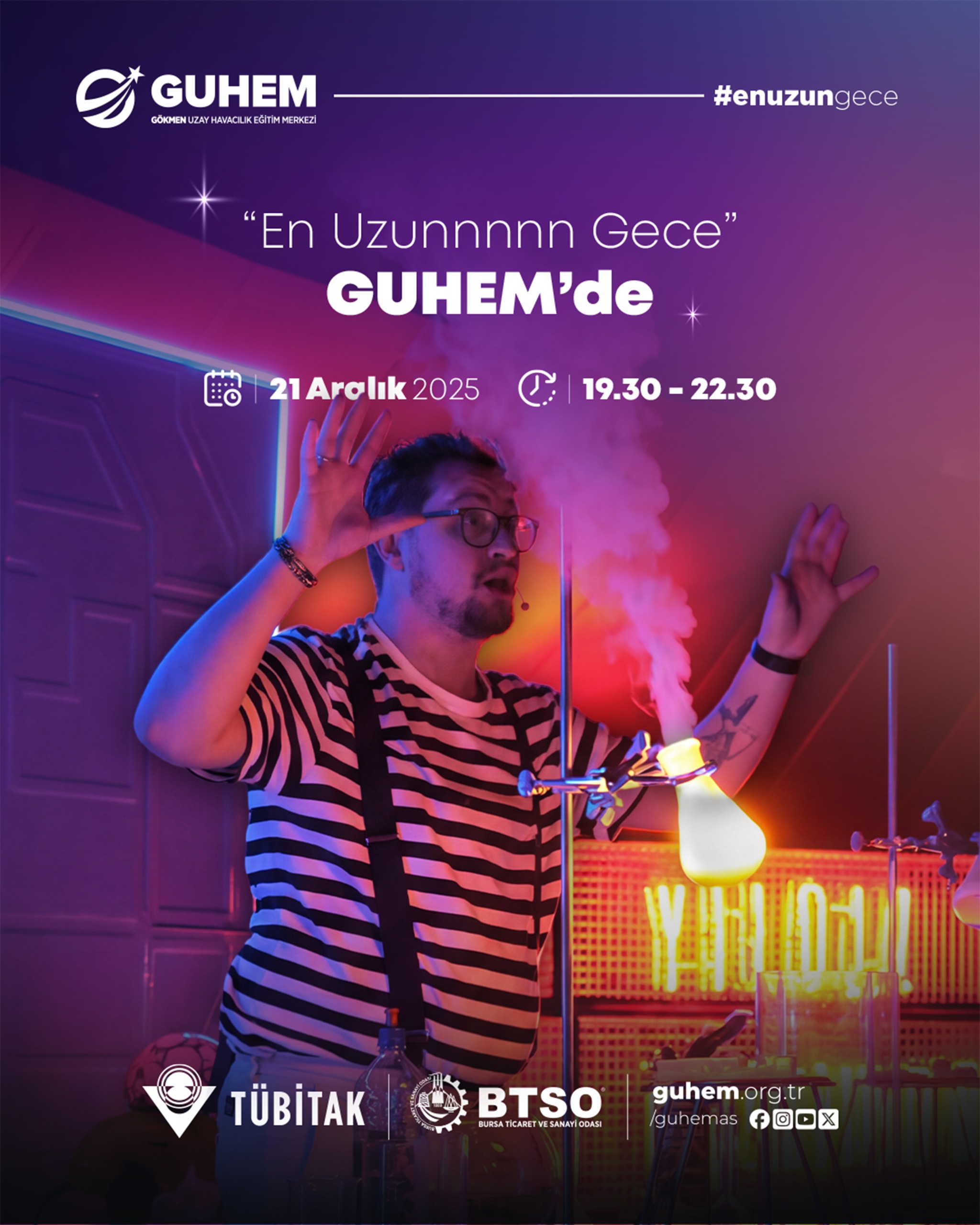- Anasayfa
- Hakkımızda
- Çalışma Saatleri
Pazartesi KAPALI Salı 10:00–17:30 Çarşamba 10:00–17:30 Perşembe 10:00–17:30 Cuma 10:00–17:30 Cumartesi 10:00–17:30 Pazar 10:00–17:30 16:30‘a kadar giriş yapabilirsiniz.
- Giriş Ücretleri
Öğrenci: 70 TL
Tam: 150 TL
Okul grubu ziyaretleri için detaylı bilgi
Simülatör, atölye, çocuk galerisi ve diğer programların ücretleri için detaylı bilgi
- Bilet Satın Al
- Ziyaret Planla
- Ürünler
- Haberler
- Bize Ulaşın
- Hesabım
₺70,00


₺500,00 Orijinal fiyat: ₺500,00.₺450,00Şu andaki fiyat: ₺450,00.
21 Aralık | En Uzun Gece
₺450,00 Orijinal fiyat: ₺450,00.₺405,00Şu andaki fiyat: ₺405,00.
🚀 En Uzuuuuuuuun Gecede GUHEM’de Buluşuyoruz!
21 Aralık 2025 • 19.30 – 22.30
Yılın en uzun gecesi geliyor…
Gökyüzü meraklılarını benzersiz bir deneyime davet ediyoruz ✨
🌌 Uzay Temalı Oryantiring
Sergi alanlarında heyecan dolu bir keşif yarışı!
🧪 Bilim Gösterileri
Aksiyon, bilim ve sürpriz efektler bir arada!
🔭 Teleskoplarla Gökyüzü Gözlemi
🎯 Yarışmalar, Fotoğraf Uygulamaları ve Sürprizler
Gece boyu tempo hiç düşmüyor!
🎟️ Sınırlı Kontenjan → Hemen biletini al!
👉 guhem.org.tr/urun/enuzungece
📍 GUHEM – Gökmen Uzay Havacılık Eğitim Merkezi
– Erken gelerek GUHEM’i keşfetmek için daha fazla zaman ayırabilirsiniz.
– 18 yaş altı misafirlerimizin ailesiyle birlikte katılım sağlaması zorunludur. 4 yaş ve üzeri için bilet alınması gerekmektedir.
– Teleskoplarla gözlem, hava koşulları elverdiği sürece gerçekleştirilebilecektir.
Paylaş
Bu web sitesi deneyiminizi geliştirmek için çerezleri kullanır.
Bu web sitesini kullanarak Gizlilik Politikamızı kabul etmiş olursunuz.

